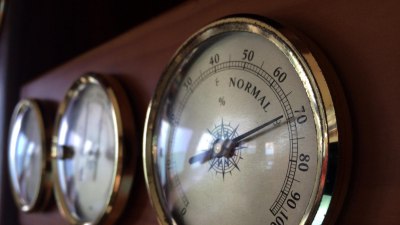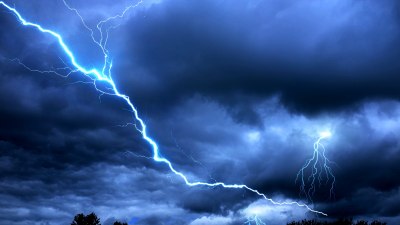Why Cold Air Sinks and Warm Air Rises in the Atmosphere
Explore the science behind why cold air sinks and warm air rises, explaining atmospheric convection, density, and temperature effects.

Image created with Flux Schnell
The behavior of air in the atmosphere, where cold air sinks and warm air rises, is a fundamental concept in meteorology and fluid dynamics. This phenomenon influences weather patterns, climate systems, and everyday experiences like feeling a cool breeze or a warm draft. Understanding the reasons behind this behavior requires diving into the properties of air, temperature's effect on density, and the principles governing atmospheric movement.
Basic Principles of Air Movement
Air is a mixture of gases that, like all matter, responds to changes in temperature and pressure. When air warms up, it expands; when it cools down, it contracts. These changes in size or volume directly affect air density, the mass of air per unit volume. Warm air is less dense because, as it expands due to heat, the molecules spread out more. Conversely, cold air is denser as the molecules are packed closer together.
Gravity acts on the mass of air, pulling denser air downward more strongly than less dense air. This interaction causes the vertical movement of air masses: heavier, cooler air sinks, and lighter, warmer air rises. This natural circulation is critically important in the formation of winds, weather systems, and atmospheric stability.
The Role of Density and Temperature
Density is a key factor in determining the vertical position of air in the atmosphere. According to the ideal gas law, air pressure (P), volume (V), temperature (T), and the number of moles of gas (n) are related by the equation PV = nRT, where R is the gas constant. Holding pressure constant, an increase in temperature leads to a decrease in density and vice versa.
When air near the Earth's surface heats up from solar radiation, it becomes less dense and begins to rise. As it rises, it encounters lower atmospheric pressure, causing it to expand and cool in an adiabatic process (without heat exchange with the environment). This cooling can lead to condensation and cloud formation if the air reaches its dew point.
On the other hand, when air loses heat, it contracts and becomes denser, causing it to sink. This sinking air warms slightly due to compression from the increasing atmospheric pressure at lower altitudes but remains cooler relative to rising air masses.
Convection and Atmospheric Circulation
Convection is the process by which heat is transferred through the movement of fluids or gases. In the atmosphere, convection occurs as a result of the temperature-induced density differences in air. Warm air rising and cold air sinking create convection currents that facilitate the vertical transport of heat and moisture.
These convective motions are responsible for many weather phenomena. For instance, daytime heating of the ground causes air to rise, forming thermals that can lead to cumulus cloud development. The sinking of cold air contributes to phenomena such as high-pressure systems, which are generally associated with clearer skies.
On a larger scale, differential heating of the Earth's surface leads to global convection cells, such as the Hadley, Ferrel, and Polar cells. These large circulation patterns drive prevailing winds, influence climate zones, and impact ocean currents through wind-driven surface movement.
Stability and Buoyancy in the Atmosphere
The atmosphere's stability is determined by how air parcels behave when displaced vertically. If a warm air parcel is surrounded by cooler air, it will continue to rise due to positive buoyancy, resulting in an unstable atmosphere conducive to turbulence and cloud formation. If the air parcel is cooler than its surroundings, it will sink back to its original position, indicating a stable atmosphere.
Buoyancy is fundamentally linked to the difference in density between the air parcels and their environment. Warm air rising is an example of positive buoyancy, whereas cold air sinking illustrates negative buoyancy relative to adjacent air masses.
Microscopic Explanation: Molecular Kinetics
On a molecular level, temperature correlates with the kinetic energy of air molecules. Warmer air molecules move faster and collide more energetically, pushing each other further apart and creating lower density. As a result, this high-energy air volume expands and rises in the cooler surrounding environment. Conversely, molecules in cold air move slower, cluster more tightly, and the overall air parcel becomes denser and sinks.
Environmental Examples and Effects
Numerous natural and everyday scenarios demonstrate this principle. For example, during a sunny day, the ground heats unevenly. Warm air above hotter surfaces rises, creating localized convective updrafts, while cooler air from shaded or moist areas descends.
Sea breezes are another example, generated because land heats up faster than water during the day. The warmer air over land rises, and cooler, denser air from over the sea flows inland to replace it. At night, the process reverses as land cools faster than the sea, producing land breezes.
Mountain-valley breezes also result from this mechanism. During the day, sunlight heats valley air, causing it to rise along mountain slopes. At night, cold, dense air sinks from the peaks down into the valleys.
Role in Weather Phenomena
The rising of warm air and sinking of cold air are central to many weather processes. Thunderstorms form when warm, moist air rapidly rises, cools, and condenses. Similarly, frontal systems involve the meeting of warm and cold air masses, where the less dense warm air rises over denser cold air.
Temperature inversions, however, are exceptions to typical atmospheric behavior. Inversions occur when a layer of warm air sits over cooler air, preventing vertical mixing. This trap of cool air near the surface can lead to pollution buildup and fog formation.
Human Influence and Considerations
Understanding why cold air sinks and warm air rises is important for various human activities. Architects and engineers use this knowledge for designing HVAC (heating, ventilation, and air conditioning) systems to optimize airflow and energy efficiency. Pilots consider these dynamics in flight planning for turbulence and lift.
Urban planners also study air movement to reduce the urban heat island effect, a phenomenon where cities experience higher temperatures than surrounding rural areas due to heat retention and disrupted airflow.
The sinking of cold air and rising of warm air are governed by the interplay of temperature, density, pressure, and gravity. Warm air expands and becomes less dense, causing it to rise; cold air contracts, becomes denser, and sinks. This vertical movement drives convection currents that influence weather, climate, and environmental conditions globally.
The next time you feel a cool breeze or see clouds forming on a sunny afternoon, you are witnessing the dynamic dance of air enabled by these fundamental principles. Their effects extend from small-scale local weather to the vast circulation patterns that govern Earth's climate system.











